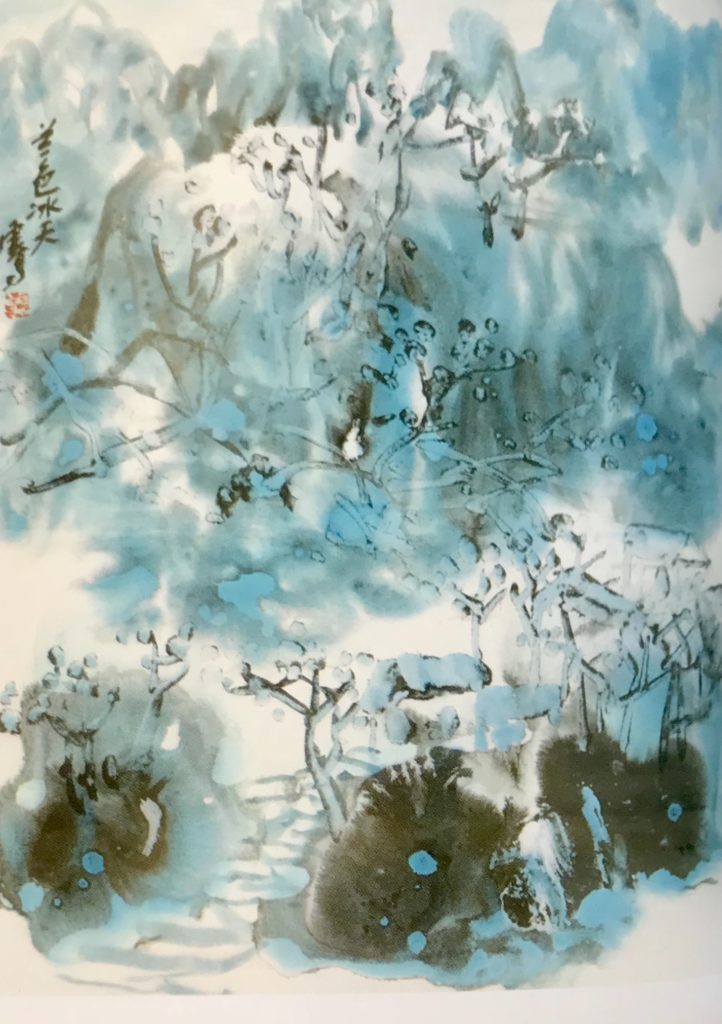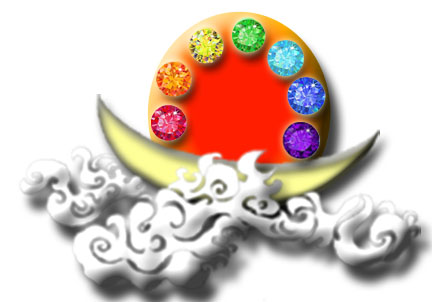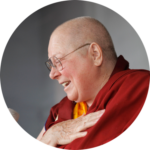
This article summarizing teachings on meditation by H.H. Dorje Chang Buddha III from two sources was originally published in 2018, but was reposted on May 6, 2020 because it was very relevant in our study of zen at that time. The first erroneous view title has been translated quite differently than the earlier one used in this article as noted below. This is a problem that we will have until there is an authorized translation available. Please be patient and consider what you may learn from looking at both translations. It is not easy to translate English from Chinese.
What Is Cultivation?
An earlier article on “What Is Cultivation?” includes two erroneous views relating to meditation. Like the “Supreme and Unsurpassable Mahamudra of Liberation,” they emphasize that one must cultivate oneself or improve one’s character and behave as a moral and ethical person before one can properly do meditation. Dorje PaMu once told me that you cannot meditate with a guilty conscience. Correct cultivation requires understanding and following eight fundamental right views in their proper sequence:
“The first one is a mind of impermanence. The second is a mind with firm belief. The third is a mind of renunciation (a mind determined to leave the cycle of reincarnation). The fourth is a mind with true vows. The fifth is a mind of diligence. The sixth is the precepts. The seventh is dhyana and samadhi (Meditation or concentration). The eighth is bodhicitta. Recognizing these eight dharmas and carrying them out with right views is correct practice of Buddha-dharma. These eight fundamental right views, which are indispensable for cultivators, must not be taken out of order.
All the fruits resulting from a mind of impermanence are causes of cultivation. All of the fruits resulting from a mind with firm belief are causes of steadfastness that does not change. All of the fruits resulting from a mind of renunciation are causes of liberation. All of the fruits resulting from a mind with true vows are causes of action. All of the fruits resulting from a mind of diligence are causes of persistent advancement. All of the fruits resulting from the precepts are causes of correct direction of cultivation. All of the fruits resulting from dhyana and samadhi are causes of wisdom. All of the fruits resulting from bodhicitta are causes leading to becoming a Bodhisattva.”
128 Evil and Erroneous Views from the Supreme and Unsurpassable Mahamudra of Liberation
Erroneous View #1: THE VIEW THAT IT IS ACCEPTABLE TO PRACTICE MEDITATION IN LIEU OF PUTTING CONCEPTS INTO PRACTICE or more recent translation Acknowledging the Shifting the Mind Practice as a meditation practice:
Even some greatly virtuous ones follow this view. I am referring to people of true great virtue. Some ancient virtuous ones also followed this view. They at least reflected this view in their speech karma, but did not reflect it in their actual conduct. Those with this view frequently use terms such as the meditation practice of bodhicitta, the meditation practice of the four limitless states of mind, and the meditation practice of the ten virtues.
If at the very beginning one uses meditation to practice bodhicitta, the four limitless states of mind, or the ten virtues, that is a false practice. Meditation practice involves realizing the concept of emptiness, realizing that phenomena are devoid of characteristics or attributes, realizing non-attachment, cutting off deluded thoughts, and returning to one’s original mind. This is devoid of the real practice of compassion. Thus, no merit can be produced. How can one possibly practice bodhicitta like that? Therefore, when practicing the four limitless states of mind or bodhicitta, beginning practitioners should not rely upon meditation or contemplation.
They should rely upon the practice of putting concepts into practice. They should transform their fixed concepts into actual deeds. They should focus their mind and transform that focused mind into action. They must put their concepts into practice, carry out the task of benefiting living beings, and implement those dharma matters that they contemplate. They should do so in a concrete manner through each word that they utter and each action that they take. This is what is meant by putting concepts into practice.
Only when one is proficient in putting concepts into practice can one turn to meditation practice to cultivate the state of not being attached to anything. From meditation one will enter the practice of concentration. From there one can penetrate deeply into the reality that emptiness and existence are not different and can eventually realize the state of applying usages that arise from Buddha-nature.
Erroneous View #2: THE VIEW THAT SITTING MEDITATION IS CULTIVATING YOURSELF
Some people say that they are cultivating themselves when they sit in meditation. Sitting meditation is not cultivation. It is just sitting meditation. Sitting meditation is for directly experiencing what one’s original nature is. Through direct observation, one comes to understand one’s mind and see one’s original nature. However, this goal may not always be achieved.
Some people use sitting meditation with the goal of directly experiencing the ultimate truth of dharma principles but may not be able to do so. Cultivating oneself is a completely different matter. Sitting meditation is less than one-tenth of cultivation. Meditation is just one of the six paramitas, having nothing to do with the other five [in terms of practice]. In cultivating oneself, one must face living beings in real life, face one’s own mind, and act as the Buddha acted.
Erroneous View #45: THE VIEW THAT THE LIGHT YOU SEE WHEN YOUR EYES ARE CLOSED IS A MANIFESTATION OF BUDDHA-DHARMA POWER
Those with this view think that the light they see when their eyes are closed is a manifestation of Buddha-dharma or Buddha power. You must remember the following. The light seen when your eyes are closed is not a manifestation of the power of the Buddha-dharma. Illusory phenomena are not manifestations of the power of the Buddha-dharma. The power of the Buddha-dharma is manifested in real things.
For example, what so many of you personally saw and experienced today was real, such as the realization power of Gar Tongstan, the tummo concentration dharma of Kaichu, and the state of realization of Miaokong and Akou Lamo. Of course, there are many other real things that you have not seen. In short, non-real light seen when the eyes are not open is an illusory phenomenon. Even if you see light with your open eyes, it still must be determined whether the light was from true Buddha power or from electricity.
Erroneous VIew #55: THE VIEW THAT ONLY PRACTITIONERS OF THE ZEN SECT CAN UNDERSTAND THEIR MIND AND SEE THEIR ORIGINAL NATURE
Many people think that only practitioners of the Zen sect can understand their mind and see their original nature. They think there is no other path to accomplish that. This is incorrect. Practitioners of any sect can understand their mind and see their original nature. When you reach the requisite degree of realization through your practice, you will understand your mind and see your original nature. True liberation is attained only by reaching that degree of realization.
CLICK for February 5, 2025 article on the Great Dharma of Zen Practice in Brief.





One must struggle against Hypocrisy and truly walk the walk to relieve the suffering of living being including ourselves, and mistaking “self” cultivating in form for the real and actual practice is an error. Thank you for this understanding.